Yellow Spotted Lizard – Species Description
The yellow-spotted lizard (Lepidophyma flavimaculatum) is a species known for its nocturnal habits. These lizards typically reach a length of about 4 to 5 inches (10 to 13 centimeters). They display a predominantly black coloration with an intricate pattern of yellow spots distributed along their sides, extending from the tip of their snouts to their rear flanks.
On their tails, the yellow spots form alternating thin and faint bands. The abdomen of the yellow-spotted lizard also bears a yellow coloration. The head of this lizard species resembles that of a snake, featuring a smooth texture, while the rest of its body is covered in tough skin. The tongue appears milky white, and the teeth are black.
There has been a notion that these yellow spotted lizards are highly venomous and primarily feed on blood, making them extremely dangerous. In popular culture, the book “Holes” depicts these lizards as storing enough deadly venom to cause slow and agonizingly painful deaths if they were to bite humans. However, it is important to note that in reality, these lizards are not considered poisonous.
The yellow-spotted lizards, although they have a slender and elongated body with yellow spots, are not inherently dangerous to humans. It is crucial to separate fact from fiction when it comes to these intriguing reptiles.
While they may possess unique characteristics and adaptations, their reputation as venomous creatures is unfounded. It is always important to rely on accurate scientific information when understanding and appreciating the natural world.
Size and Appearance
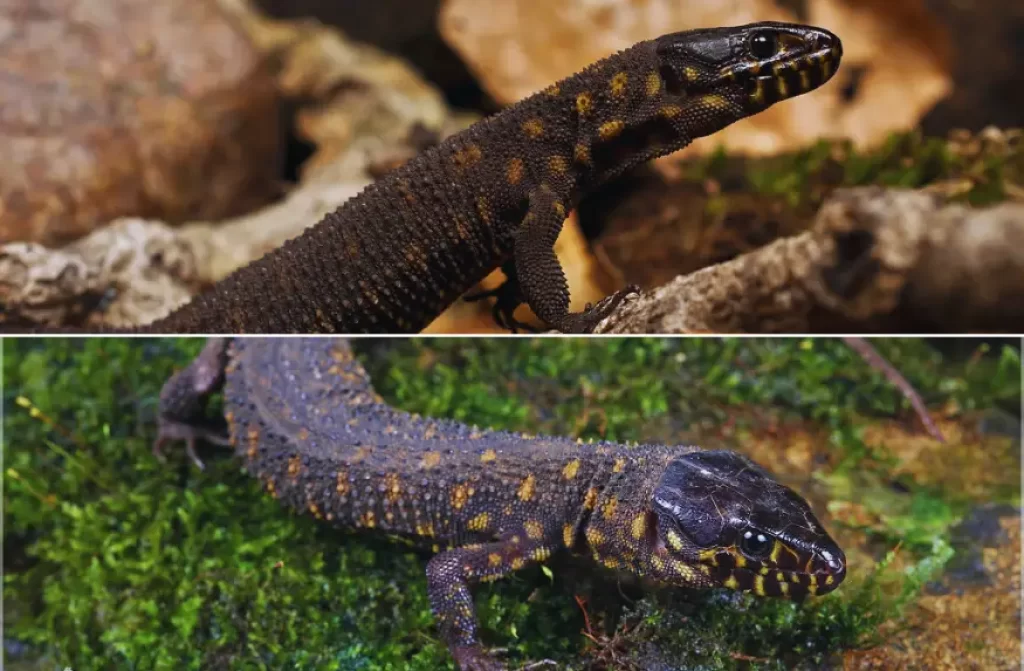
The Yellow Spotted Lizard (Lepidophyma flavimaculatum) is a fascinating reptile known for its small size and distinct appearance. Let’s delve into its size and physical characteristics in more detail.
Size
The Yellow Spotted Lizard typically measures between 4 to 5 inches (10 to 13 centimeters) in total length. While this may seem small compared to other reptiles, it is perfectly suited to the lizard’s unique habitat and lifestyle. Its compact size allows it to navigate through various environments with agility and efficiency.
Body Shape
This lizard has a slender body with a streamlined shape, enabling it to move swiftly and effortlessly. Its body is elongated, featuring a series of vertebral segments that provide flexibility and coordination. The lizard’s body structure is well-adapted to its arboreal or semi-arboreal lifestyle, allowing it to climb trees and rocks with ease.
Scales and Skin
The Yellow Spotted Lizard’s skin is covered in smooth and glossy scales. These scales not only provide protection against potential threats but also aid in reducing water loss, particularly in dry environments. The lizard’s skin may have a slight sheen to it, giving it a sleek and polished appearance.
Coloration
The lizard exhibits a range of coloration, but the most prominent is its base color of brown or olive-brown. This coloration serves as effective camouflage, helping the lizard blend into its natural habitats such as forested areas, rocky outcrops, and shrublands. By matching its surroundings, the lizard can avoid being detected by both predators and prey.
Yellow Spots and Patterns
One of the distinguishing features of the Yellow Spotted Lizard is its scattered yellow spots across its body. These spots can vary in size and shape, ranging from small dots to larger irregular patterns.
The contrast between the yellow spots and the lizard’s base color creates an eye-catching and distinctive appearance. The exact pattern and arrangement of spots can vary between individuals, adding to the uniqueness of each lizard.
Sexual Dimorphism
In some cases, there may be slight differences in size or coloration between male and female Yellow Spotted Lizards. Males may exhibit more vibrant or pronounced coloration, particularly during the breeding season, as they compete for mates.
Overall, the Yellow Spotted Lizard’s small size, slender body, smooth scales, and distinctive brown base color with scattered yellow spots make it an intriguing and visually appealing species.
Its unique appearance, coupled with its ability to blend into its surroundings, allows it to thrive in its natural habitat and remain well-adapted to its environment.
Habitat and Distribution
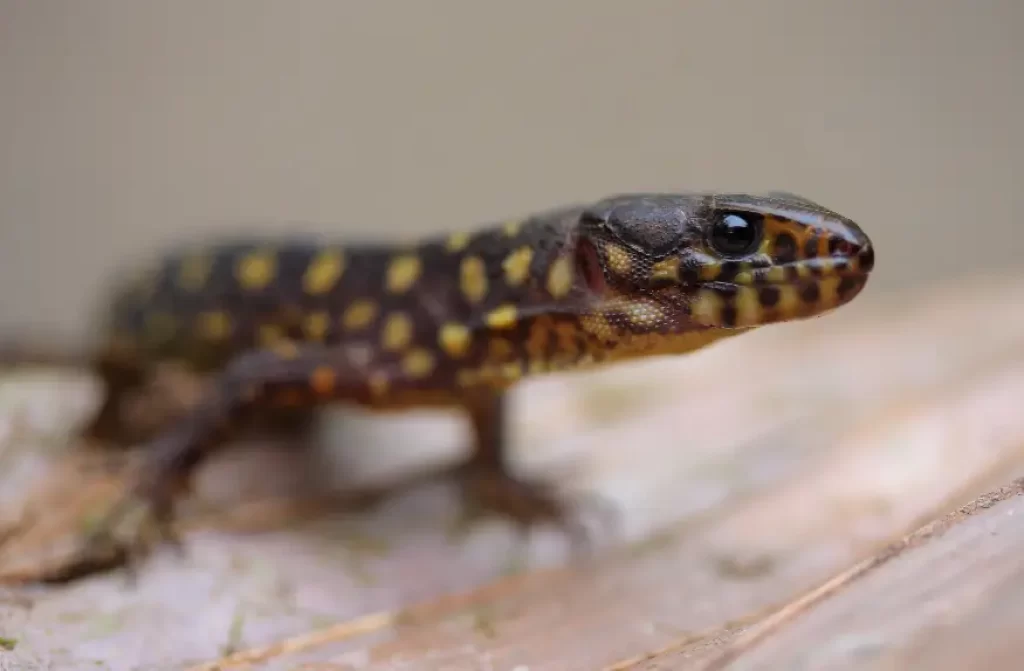
The Yellow Spotted Lizard (Lepidophyma flavimaculatum) is a reptile species that thrives in specific habitats within the tropical regions of Central America. Let’s explore its preferred habitat and distribution in more detail.
Habitat
Yellow Spotted Lizards are typically found in humid forested areas, particularly in tropical rainforests, cloud forests, and wooded regions. These habitats offer an abundance of vegetation, moisture, and diverse microhabitats that support the lizard’s needs.
Within their chosen habitats, Yellow Spotted Lizards tend to occupy various microenvironments. They are skilled climbers and often utilize tree trunks, branches, and foliage as their perches.
The lizards may also seek shelter and protection within leaf litter, fallen logs, and rock crevices. These natural hiding spots provide them with security and camouflage from potential predators.
Distribution
The distribution of Yellow Spotted Lizards spans several countries in Central America, including Mexico, Honduras, Belize, and Guatemala. Within these regions, they can be found in both lowland and highland areas, showcasing their adaptability to different elevations and environments.
Their distribution may vary within each country, as they inhabit specific pockets of suitable habitat within their range. The presence of suitable vegetation, water sources, and appropriate microclimates play a crucial role in determining their distribution.
It’s worth noting that the Yellow Spotted Lizard’s specific distribution within its range may be influenced by factors such as local environmental conditions, competition with other reptile species, and natural barriers that limit their movement.
Overall, the Yellow Spotted Lizard’s habitat preference encompasses humid forested areas, with a particular affinity for tropical rainforests, cloud forests, and wooded regions.
Their distribution spans Central American countries, where they inhabit both lowland and highland areas, utilizing various microhabitats for shelter, foraging, and breeding.
Fun fact: Yellow Spotted Lizard are Tree-dwelling reptails! While they are terrestrial, they prefer to stay near the bases of trees, often hiding beneath the bark, in crevices, or among leaf litter. Check other fun facts for kids fats here.
Behavior and Activity
The Yellow Spotted Lizard (Lepidophyma flavimaculatum) exhibits fascinating behavior and activity patterns. Let’s delve into their behavioral characteristics in more detail:
Diurnal Nature
The Yellow Spotted Lizard is a diurnal species, which means it is active during the daytime. They are most active in the early morning and late afternoon, utilizing the daylight hours for various activities such as foraging, thermoregulation, and social interactions.
Terrestrial Lifestyle
This lizard species is primarily terrestrial, spending the majority of its time on the ground. They navigate their habitat by crawling and walking on all fours, utilizing their agile limbs and strong grip. The Yellow Spotted Lizard is well-adapted to terrestrial life and can move swiftly across the forest floor in search of food, shelter, and mates.
Climbing Abilities
While the Yellow Spotted Lizard is primarily a ground-dwelling species, it exhibits proficient climbing abilities. When threatened or in search of elevated vantage points, these lizards can scale low vegetation such as trees and shrubs. Climbing offers them an escape route and a means to access resources in their environment.
Solitary Nature
Yellow Spotted Lizards are generally solitary creatures, preferring to live and forage alone. They establish and defend their own territories, which may overlap with the territories of other individuals.
While they are not highly social animals, occasional interactions between individuals can occur during mating season or encounters at shared resources.
When it comes to communication, Yellow Spotted Lizards primarily rely on visual cues and olfactory signals. They use body postures, coloration, and scent marking to communicate with conspecifics and establish dominance or reproductive status.
It’s important to note that the behavior and activity patterns of Yellow Spotted Lizards can vary based on individual temperament, environmental conditions, and reproductive cycles.
Their diurnal nature, terrestrial lifestyle, climbing abilities, and solitary behavior collectively contribute to their survival and adaptation in their natural habitat.
Diet and Feeding Habits of Yellow Spotted Lizard
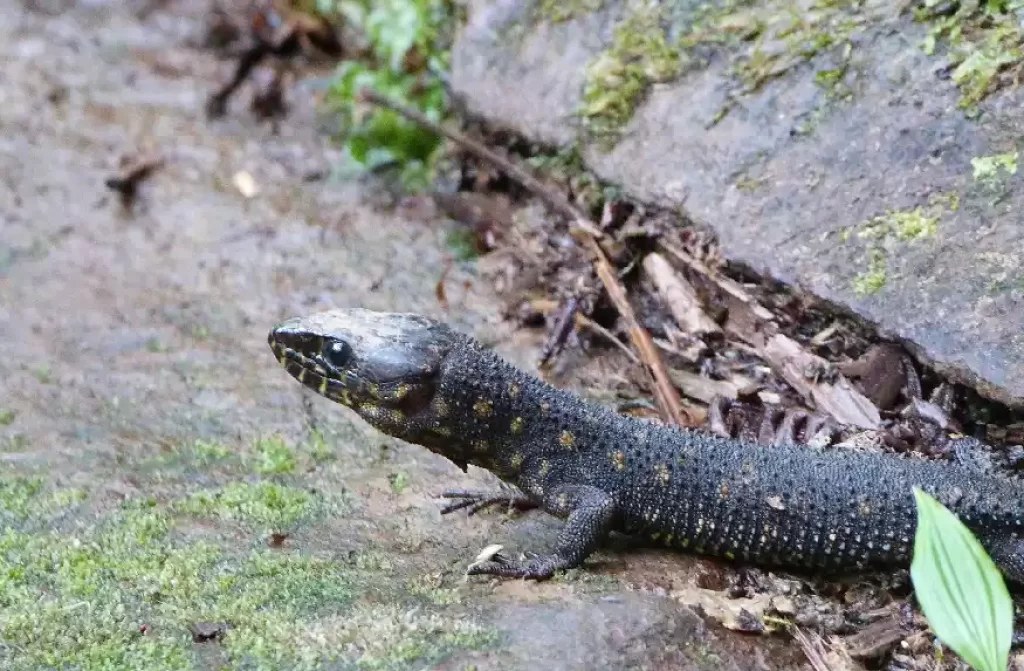
The Yellow Spotted Lizard (Lepidophyma flavimaculatum) is an insectivorous reptile with specific dietary preferences. Let’s explore their diet and feeding habits in more detail:
Insectivorous Diet
Yellow Spotted Lizards primarily feed on a variety of small invertebrates. Their diet mainly consists of insects such as ants, beetles, spiders, and other small arthropods. They are well adapted to capturing and consuming these agile prey items.
Hunting Techniques
These lizards employ various hunting techniques to capture their prey. With their keen eyesight and quick reflexes, they actively search for insects in their immediate surroundings.
Once a suitable prey item is located, they employ their agility and speed to capture it. The Yellow Spotted Lizard uses its sharp teeth and jaws to seize and subdue the prey.
Foraging Strategies
Yellow Spotted Lizards are opportunistic foragers, meaning they take advantage of available food sources within their habitat.
They may actively search for prey or wait in strategic positions for insects to come within striking distance. Leaf litter, fallen logs, and vegetation provide hiding spots and potential hunting grounds for these lizards.
Feeding Frequency
The feeding frequency of Yellow Spotted Lizards can vary depending on factors such as prey availability, environmental conditions, and individual metabolism. They typically feed on a regular basis to meet their energy requirements.
Water Intake
While these lizards obtain some moisture from the insects they consume, they still require access to water sources for hydration. They may drink from water droplets found in their habitat or seek out natural water sources like puddles or small streams.
It’s important to note that the diet and feeding habits of Yellow Spotted Lizards may vary slightly depending on factors such as geographic location, seasonal changes, and individual preferences. Their insectivorous diet allows them to thrive in their natural habitat, contributing to their overall health and survival.
Reproduction behavior of Yellow Spotted Lizards
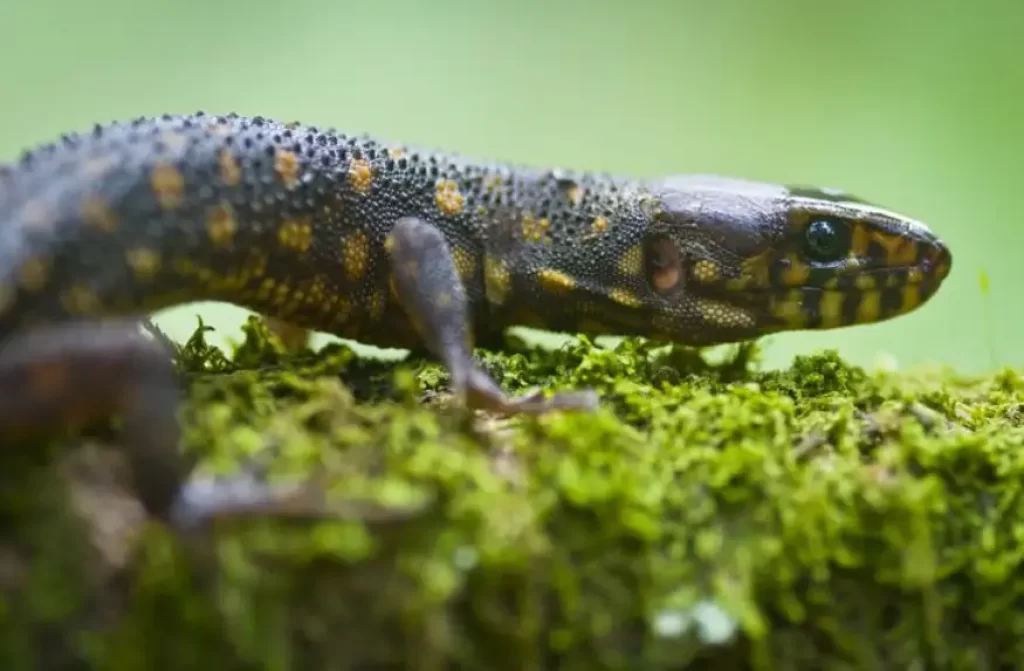
The reproductive behavior of Yellow Spotted Lizards (Lepidophyma flavimaculatum) involves the production of eggs, following a typical pattern seen in many lizard species. Although comprehensive information about their reproduction is limited, here are some key aspects:
Breeding Season
Yellow Spotted Lizards are known to exhibit a breeding season, a period when they engage in reproductive activities.
The timing of the breeding season may vary depending on factors such as geographic location and environmental conditions. During this period, both male and female lizards become sexually active.
Mating Behavior
Male Yellow Spotted Lizards likely engage in courtship displays to attract females. These displays may involve visual cues, such as head-bobbing or body movements, as well as vocalizations or pheromone signaling. The specific mating behaviors and rituals of this species are not extensively studied and may require further research for a comprehensive understanding.
Egg Laying
After successful mating, female Yellow Spotted Lizards lay eggs as part of their reproductive process. The exact number of eggs laid per clutch can vary, but it is typically within a moderate range.
Females likely seek out suitable nesting sites, which may include underground burrows, leaf litter, or other concealed locations. These sites provide protection and favorable conditions for egg incubation.
Incubation and Hatching
Once the eggs are laid, they undergo an incubation period. The duration of incubation can vary depending on factors such as temperature and environmental conditions. During this period, the eggs are left unattended by the female. Eventually, the eggs hatch, giving rise to baby lizards known as hatchlings.
Parental Care
Like many lizard species, Yellow Spotted Lizards do not exhibit extensive parental care. After laying the eggs, the female does not provide further care for the offspring. Once the hatchlings emerge from the eggs, they are independent and must fend for themselves.
It’s important to note that the reproductive behavior and biology of Yellow Spotted Lizards may vary across their range.
Further scientific studies are necessary to provide more detailed insights into their specific reproductive strategies and behaviors.
Conservation Status
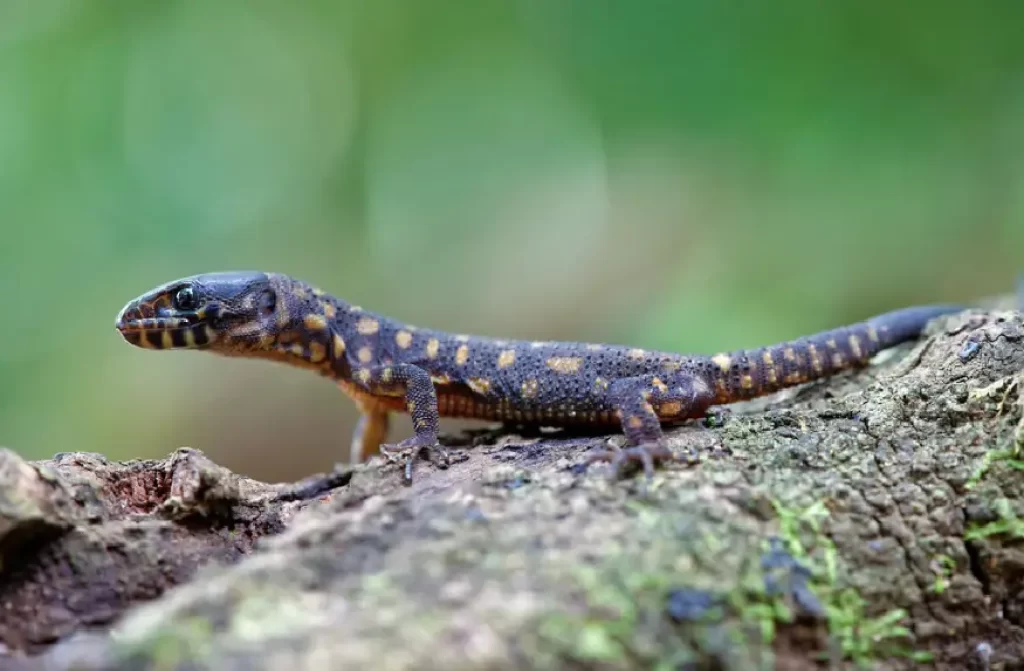
The Yellow Spotted Lizard (Lepidophyma flavimaculatum) is a reptile species found in the tropical regions of Central America. While its conservation status has not been assessed on a global scale by international organizations, there are important considerations regarding its conservation and potential threats.
Habitat Loss and Fragmentation
The Yellow Spotted Lizard primarily inhabits humid forests, tropical rainforests, and wooded areas in Central America. These habitats are under threat due to deforestation, land conversion for agriculture, and urbanization.
As human activities continue to encroach upon natural habitats, the lizard’s population becomes vulnerable to habitat loss and fragmentation, which can disrupt their natural behaviors, restrict movement, and limit access to essential resources.
Human Activities
Various human activities pose direct and indirect threats to the Yellow Spotted Lizard. Illegal logging, unsustainable land use practices, and infrastructure development can lead to habitat destruction and degradation.
These activities not only reduce suitable habitat for the lizards but also disrupt the ecological balance of their environments. Furthermore, the pet trade and collection of these lizards for the exotic pet market may also contribute to population decline if not regulated properly.
Limited Research and Data
Due to the limited research and data available, a comprehensive assessment of the Yellow Spotted Lizard’s population size, distribution, and specific threats is challenging.
Further scientific studies and surveys are necessary to gather more information on the species’ ecology, behavior, and conservation needs. Increased research efforts can provide valuable insights into effective conservation strategies and prioritize conservation actions.
Conservation Efforts
Conservation efforts for the Yellow Spotted Lizard should focus on preserving its natural habitats and raising awareness about its ecological importance.
This involves implementing sustainable land use practices, protecting key habitats through the establishment of protected areas or conservation reserves, and promoting community involvement in conservation initiatives.
Collaborative efforts between researchers, conservation organizations, local communities, and governmental agencies are essential for the successful conservation of the species.
Is the Yellow Spotted Lizard poisonous?
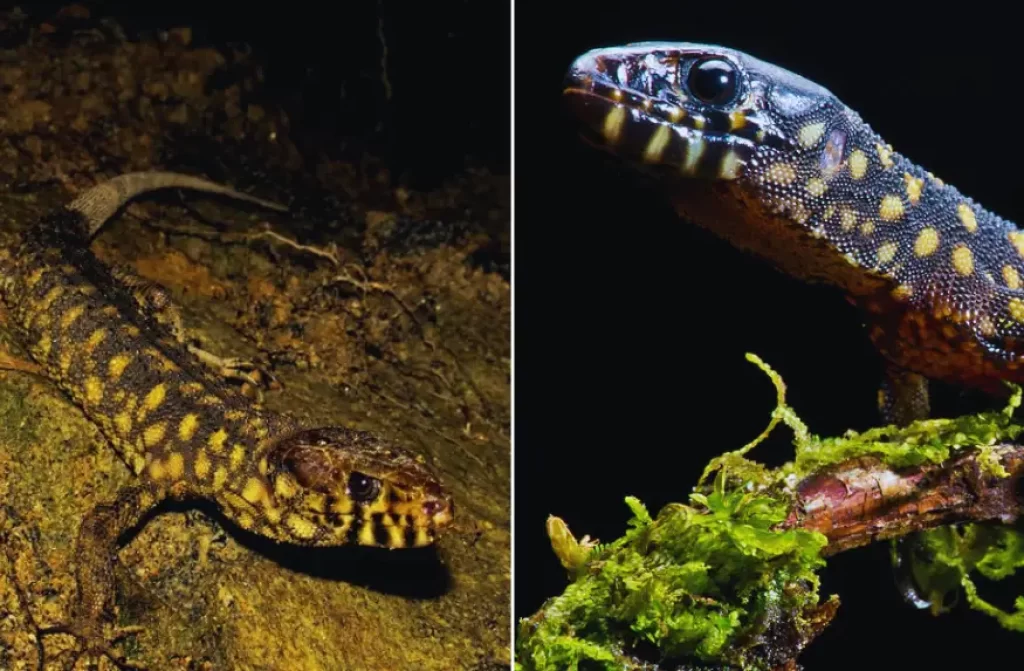
No, the Yellow Spotted Lizard (Lepidophyma flavimaculatum) is not known to be poisonous. It does not possess venom glands or any specialized venom-delivery mechanisms. Therefore, it is considered non-venomous and poses no significant threat to humans.
However, it’s worth noting that while the Yellow Spotted Lizard may bite if threatened, its bite is not known to cause harm or produce toxic effects. It is always advisable to treat any wild animal with caution and avoid handling them to minimize stress for both the animal and yourself.
Is the Yellow Spotted Lizard from holes real?
The existence of a “Yellow Spotted Lizard” from holes, as depicted in the novel “Holes” by Louis Sachar, is fictional. The Yellow Spotted Lizard is not a real species. It was created by the author for the purpose of the story.
In the book, the Yellow Spotted Lizard is portrayed as a venomous and dangerous creature that adds to the challenges faced by the characters. However, in reality, there is no actual lizard species called the Yellow Spotted Lizard. It’s important to distinguish between fictional portrayals in literature or media and real-world species.
How many spots does a yellow-spotted lizard have?
The number of spots on a Yellow Spotted Lizard can vary among individuals. As the name suggests, these lizards typically have yellow spots on their bodies, but the exact number and pattern of spots can differ.
Some Yellow Spotted Lizards may have a few large spots, while others may have numerous smaller spots scattered across their body.
The spots can range in size and shape, adding to the lizard’s unique and distinctive appearance. It’s important to remember that individual variation exists within the species, so the exact number of spots can differ from one Yellow Spotted Lizard to another.
What do yellow spotted lizards eat in holes?
Yellow spotted lizards do not exclusively feed on food found in holes. As insectivorous reptiles, they have a diverse diet that primarily consists of small invertebrates. Yellow spotted lizards commonly feed on a variety of insects, such as ants, beetles, spiders, and other small arthropods. They are skilled hunters, relying on their keen eyesight and quick reflexes to capture their prey.
While they may encounter insects or other prey in holes, their feeding habits are not limited to that particular habitat. These lizards explore their surrounding environment, including the ground and low vegetation, to find their food sources. It’s important to note that the feeding behavior of yellow spotted lizards can vary depending on their specific habitat and availability of prey.
Kenno Marques is a self-taught English speaker deeply passionate about nature and wildlife. He dedicates his time to scouring the web for the latest animal news and engaging content, which he shares on various websites. Fluent in three languages, Kenno is currently on a journey to master German. His commitment to fostering an understanding of the natural world makes him a valuable contributor to the online community.







